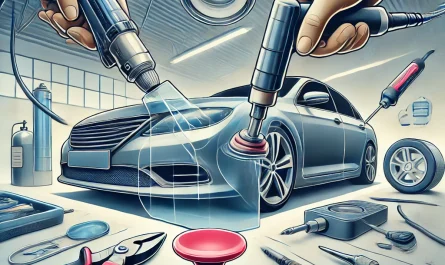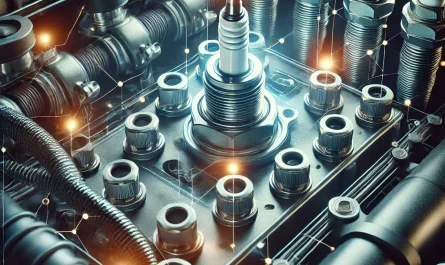As the holiday season brings cheer and nostalgia, there’s no better time to celebrate an icon of Indian automotive history. In this in-depth article, we explore one of the last hard-top Suzuki Samurai—or Suzuki SJ—vehicles in the world, the classic Gypsy car 4×4. Manufactured in 2019 and registered in June of that year, this retro machine is not only a testament to decades of engineering but also a living relic of an era when simplicity met rugged off-road capability.
Whether you’re a long-time enthusiast or a newcomer intrigued by the Gypsy’s legacy, this comprehensive guide covers everything from historical significance and unique design features to modern upgrades and maintenance tips. We’ve seamlessly integrated key phrases like Gypsy car price, Maruti Gypsy 4×4 price in India, Gypsy engine cc, and more.

A Retro Classic: The Legacy of the Maruti Gypsy
Introduced in India back in 1985, the Gypsy has enjoyed one of the longest production runs for any car in the country—continuing its evolution right up to 2019. Originally launched as the Suzuki LJ in 1970 and evolving through the Suzuki SJ generations, this vehicle became a symbol of Indian off-roading excellence. Its enduring appeal lies in a design that has changed only slightly over the decades while retaining its unmistakable body shape and rugged spirit.
The model discussed here is painted in Superior White and carries the designation MG 413W. In this nomenclature, MG stands for Maruti Gypsy 413, and the “W” denotes “wide track.” Fender flares were extended beyond the body line to improve stability after issues encountered by earlier Samurai models in the United States. This legacy of design innovation continues to endear the gypsy full model to collectors and off-road enthusiasts alike.
Historical Background and Production Insights
The evolution of the Gypsy is a story of endurance and simplicity. The second-generation Suzuki SJ arrived in India in 1985 when Maruti was founded. Over the years, while minor tweaks and upgrades have been implemented, the core design philosophy—a lightweight vehicle with robust off-road credentials—has remained unchanged. From early models powered by a 1.3-liter engine (often referred to in enthusiast circles when discussing gypsy engine cc) to its later, factory-spec hard top variants, the Gypsy has always been a blend of rugged capability and minimalist design.
This particular model, one of the very last hard top versions available in India, stands as a testament to a production run that spanned from the mid-1980s until 2019. Its pristine condition, with only a few chips accrued over 4½ years of life on Indian roads, highlights the enduring quality and maintenance ease of this legendary gypsy car.
Exterior Features and Unique Design Elements
Timeless Styling with Modern Upgrades
At first glance, the Gypsy’s retro charm is unmistakable. The hard top design is evident by subtle yet definitive features:
- Factory Hard Top Characteristics: Unlike soft-top variants that require a hoop to secure the windshield when folded, the hard top is built with integrated silicone sealant and continuous rubber beading to prevent leaks and rattling.
- Distinctive Stance: Mounted on non-standard steel rims with an offset, the Continental Cross Contact tires (215 cross-sections) provide an aggressive stance. Although the offset means the wheels jut out slightly—resulting in a modest splash through puddles—it also enhances the vehicle’s rugged look.
Practical Enhancements for Off-Road Prowess
Apart from its vintage appeal, several practical modifications add to the Gypsy’s capability as a gypsy car 4×4:
- Extended Fender Flares: Designed to improve stability, these flares have become synonymous with the wide-track variants.
- Door and Tailgate Design: The tailgate combines metal with a fiberglass door that conceals the internal latch mechanisms. A robust door switch (imported from abroad) ensures that the boot alarm is activated upon opening, underscoring the vehicle’s attention to detail.
- Innovative Storage: An unusually placed jack inside the bonnet not only saves space but also adds to the vehicle’s practical design for off-road adventures.
Interior Comfort and Unique Seating Arrangements
Step inside, and the Gypsy’s cabin reflects its utilitarian yet thoughtful design:
- Seating and Configurations: The hard top version has comfortable cloth seats, while the soft top variant features white seats with enhanced weather resistance. Despite its compact size, the vehicle can seat seven passengers—a rarity in today’s market.
- Dashboard and Instrumentation: The dashboard has largely retained its original design since the Gypsy was first launched. It features essential instruments like a temperature gauge and a fuel gauge. Modern touches, such as a Bluetooth stereo and recently installed electric power windows, offer a blend of classic design and contemporary convenience.
- Headroom and Accessibility: With abundant headroom thanks to a high ceiling panel, even a retro vehicle like the Gypsy provides a surprisingly spacious feel. A fold-out footrest on the passenger side further emphasizes the vehicle’s attention to ergonomic details, making it accessible even for those who may find it challenging to climb into a traditionally styled off-roader.

Under the Hood: The Engine and Mechanical Backbone
The Enduring 1.3-Liter Engine
At the heart of this gypsy car is the original 1.3-liter engine—a unit celebrated for its robustness and reliability.
- Historical Significance: This engine first debuted in the upgraded Maruti 1000 in the mid-1990s, producing around 65 BHP in carburetor form. In subsequent models, such as the Gypsy King introduced in 1996, power was moderated to 60 BHP with a corresponding boost in torque.
- Maintenance and Upgrades: The engine, mounted longitudinally, has been maintained with care—oil changes and filter cleaning are routinely performed. A non-factory battery (originally designed for the jimney variant) has been installed, offering extra power for added upgrades like electric power steering.
Mechanical Simplicity Meets Modern Necessity
While the Gypsy’s original mechanical setup remains largely intact, modern retrofits have been thoughtfully integrated:
- Electric Power Steering: A motor, repurposed from a wagon, is mounted on the steering column to deliver electric assistance while preserving the original steering box. Although it has minor drawbacks (such as reduced assistance at idle and a slight gap in full angular support), it significantly improves maneuverability, especially in tight urban conditions.
- Air Conditioning and Additional Cooling: The upgraded air conditioning system includes a compressor, condenser (mounted under the body above the propeller shaft), and a unique 10-inch additional fan. This setup ensures that even when the AC is engaged, engine temperatures remain in check—a critical modification for a vehicle with the off-road pedigree of a gypsy car 4×4.
Suspension, Handling, and Off-Road Capabilities
A Lightweight Yet Capable Platform
The Gypsy’s design philosophy centers on rugged simplicity:
- Solid Axles and Leaf Springs: With no independent suspension at the front or rear, the Gypsy employs solid axles paired with leaf springs, providing exceptional articulation and durability in off-road environments.
- Off-Road Mastery: The inclusion of a low-range gearbox makes this vehicle extremely capable in challenging terrains. However, as modern safety expectations have evolved, the Gypsy lacks features such as airbags, ABS, or factory-installed power steering—reminding us that it is a classic rather than a modern all-rounder.
Enhancing On-Road Dynamics
Despite its off-road bias, careful upgrades can make the Gypsy more adaptable for city driving:
- Freewheeling Hubs: Recommended for those who frequently traverse busy streets, freewheeling hubs reduce drivetrain resistance, helping the Gypsy keep up with contemporary traffic while still offering robust four-wheel drive when needed.
- Ride Quality Considerations: Enthusiasts note that while heavy off-road modifications (like lifted suspensions or aggressive spring kits) can improve ground clearance and torque, they may also lead to a stiffer ride. Stock suspension, when maintained correctly, offers a balance of comfort and performance that is integral to the Gypsy’s character.
Understanding the Four-Wheel Drive System
The Gypsy employs a part-time four-wheel drive system that is both simple and effective:
Modes of Operation:
- 2H (Two-Wheel Drive): Ideal for normal on-road conditions.
- 4H (Four-Wheel Drive High Range): Distributes power to all wheels without changing the gearing.
- Neutral Mode: Useful for towing or operating PTO winches.
- 4L (Four-Wheel Drive Low Range): Alters the gearing significantly, providing high torque for challenging terrains like sand or rocky trails.
This versatility, along with the vehicle’s lightweight construction, underscores why the Maruti Gypsy 4×4 price in India remains attractive to off-road purists and commercial operators alike.
Driving Experience: The Soul of a Gypsy Car
Behind the wheel, the Gypsy offers an experience that is raw, mechanical, and undeniably engaging:
- Engine Character and Revving Behavior: On a cold start, the engine’s revs are intentionally high to quickly reach optimal operating temperature—a quirk that some new drivers might misinterpret as excessive noise, though it is entirely by design.
- Electric Power Steering in Action: Once in motion, the electric steering system delivers precise assistance, enhancing maneuverability during U-turns and narrow street driving. Its slight limitations at idle are quickly overcome as the vehicle picks up speed.
- A Thrashy Ride: While not the fastest or most insulated vehicle on modern highways, the Gypsy’s unmistakable character is revealed in its vibrant engine note, mechanical gear shifts, and the constant sense of adventure it inspires—even if that means a bumpy ride over rough roads.
For those who have long dreamt of experiencing the unadulterated charm of a gypsy, this vehicle continues to capture hearts and imaginations.
Maintenance, Pricing, and Ownership Considerations
Affordable Upkeep for a Classic Machine
One of the most appealing aspects of owning a Gypsy is its simplicity and low maintenance cost. Routine services—such as oil changes and air filter cleanings—can be completed for as little as ₹2,000–₹3,000. This cost-effectiveness contributes significantly to the overall gypsy car price and makes it a sensible choice for enthusiasts and collectors.
Market Range and Collector’s Value
- Pricing Spectrum: For those in the market, Gypsies are available at prices starting from approximately ₹50,000 and can climb up to nearly ₹12 lakhs for well-maintained, factory-spec models.
- Collector’s Appeal: The timeless design and cultural significance of the Gypsy ensure that it holds a special place among collectors. Whether you’re considering a soft top conversion (an option not available with newer models like the jimney) or keeping it in its original hard top form, owning a Gypsy is as much about passion as it is about practicality.
The robust design and enduring charm of the Gypsy continue to influence aftermarket modifications and even inspire modern vehicles. The term “gypsy full” encapsulates the idea that when you own one of these machines, you’re embracing a full legacy of rugged, minimalist design.
Conclusion: Embracing the Legacy of a True Off-Road Icon
The Maruti Gypsy remains an iconic symbol of Indian automotive history—a gypsy car that has weathered decades of change while preserving its core identity. With its lightweight frame, reliable 1.3-liter engine (often discussed in terms of gypsy engine cc), and a part-time four-wheel drive system that caters to both urban and off-road environments, this vehicle is a dream for enthusiasts who value mechanical purity over modern excess.
From its distinctive design features and interior practicality to thoughtful modern upgrades like electric power steering and enhanced air conditioning, this Gypsy is not just a mode of transport but a statement of resilience and nostalgia. Whether you’re evaluating the Maruti Gypsy 4×4 price in India or simply admiring its storied past, the Gypsy continues to command respect—on and off the road.
FAQs
What is the history behind the Maruti Gypsy 4×4?
Answer:
Introduced in 1985, the Maruti Gypsy 4×4 is an off-road icon derived from the Suzuki Samurai/SJ series, with production continuing until 2019.
2. How much does a Maruti Gypsy 4×4 cost in India?
Answer:
Prices range from about ₹50,000 for basic models to nearly ₹12 lakhs for well-maintained, factory-spec hard top variants.
3. What are the main features of a Gypsy car 4×4?
Answer:
Key features include a lightweight design, a durable 1.3-liter engine, part-time 4WD, extended fender flares for stability, and a minimalist, practical interior.
4. What does “gypsy engine cc” refer to in the context of the Maruti Gypsy?
Answer:
It refers to the engine displacement, typically the reliable 1.3-liter engine used in the Gypsy.
5. What is the difference between a hard top and a soft top Gypsy?
Answer:
A hard top has a factory metal roof with integrated seals for durability, while a soft top uses fabric that requires additional support and is less robust.
6. Is the Maruti Gypsy 4×4 suitable for both on-road and off-road use?
Answer:
Yes, it performs well off-road with its low-range gearbox and 4WD, and recent upgrades enhance its on-road handling for short trips.
7. What common upgrades are available for the Maruti Gypsy?
Answer:
Popular upgrades include electric power steering, freewheeling hubs, and enhanced air conditioning systems.
8. How affordable is the maintenance of a Maruti Gypsy 4×4?
Answer:
Maintenance is very affordable, with routine services like oil changes and air filter cleaning costing around ₹2,000 to ₹3,000.


